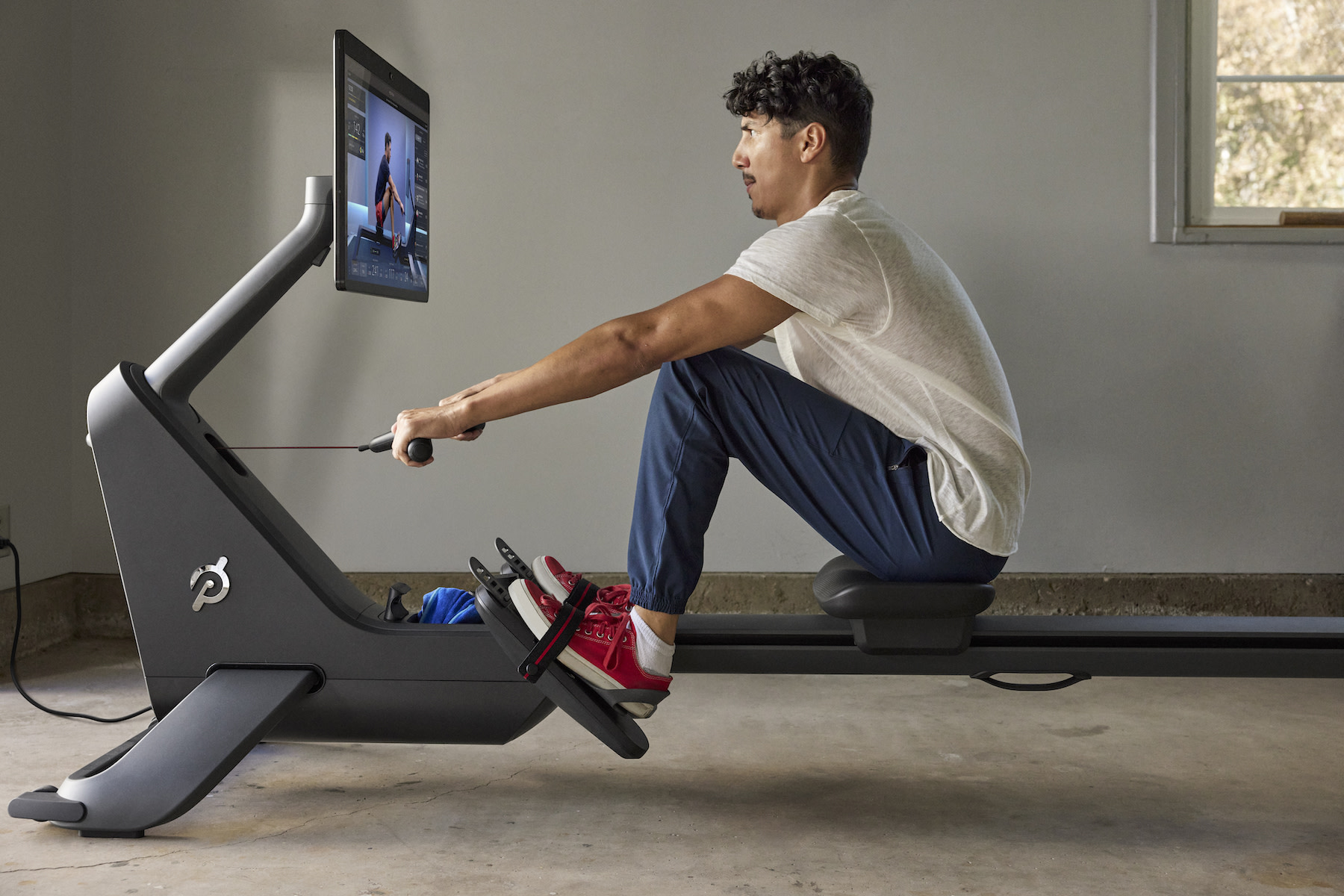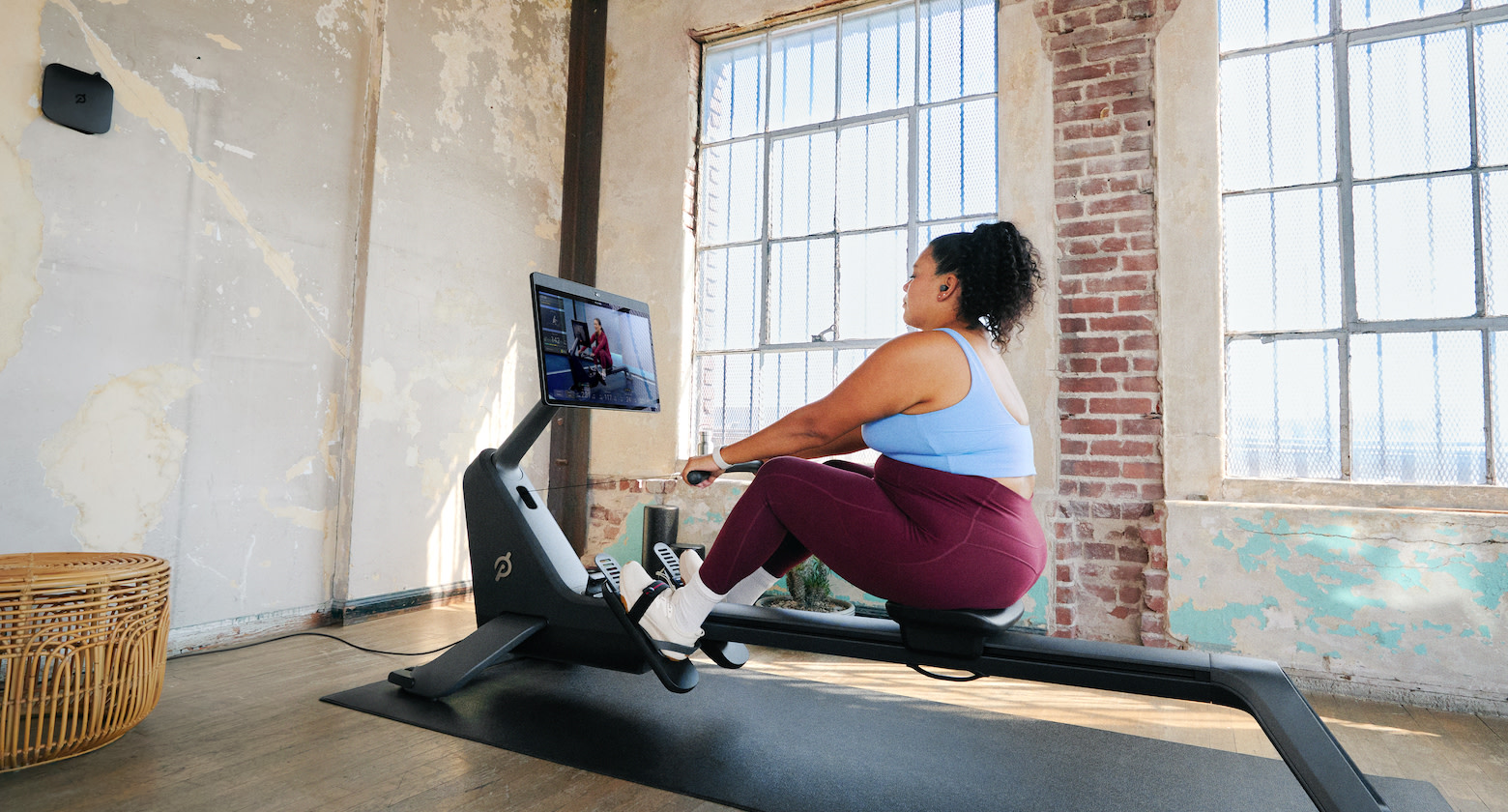
Is Rowing a Full-Body Workout?
A Peloton Row instructor answers this burning question.
By Alyssa Sybertz•
Is Rowing a Full Body Workout?
The Full-Body Benefits of Rowing
Why Your Form Is Critical
How Long Should Your Rowing Workouts Last?
4 Different Rowing Workouts
3 Tips to Improve Your Rowing
Legs, body, arms, arms, body, legs. It’s a sequence you may repeat to yourself over and over (and over) again during a rowing workout—or hear from a Peloton Row instructor. However, as you methodically name these muscle groups, you may wonder: Is rowing truly a full-body workout?
Is Rowing a Full Body Workout?
In short, yes. Not only is rowing one of the most accessible workouts, it’s also one that targets key muscles throughout your body. Here, we break down the full-body benefits of rowing, as well as critical takeaways to keep in mind the next time you take a seat.
The Full-Body Benefits of Rowing
1. It’s Powerful Cardio
Most rowing workouts will spike your heart rate. Once you understand the proper form and start to increase your stroke rate (the speed at which you’re moving up and down the slide), rowing becomes an incredibly effective and powerful cardiovascular workout. In a similar way to hitting the hills or intervals on the Peloton Bike, you can vary the way you row to clock the cardio workout you desire.
2. It Builds Strength
“I think rowing offers the best combination of cardiovascular endurance and strength,” says Peloton instructor Alex Karwoski. Unlike a stride in running or a pedal stroke in biking, the rowing stroke has separate components that mimic strength training in many ways. On the drive, you’re pushing and engaging your muscles in an explosive movement. On the recovery, you’re relaxing slightly while still maintaining that critical stability. Think of it as a horizontal squat jump, with the drive as the jump and the recovery as the squat you land in.
“Similar to strength training, it’s that rhythm where you have to load and unload,” Alex says. “And because you can change the stroke rate and row at a lower one, that can increase your time under tension.” While there are certain ranges of motion (lateral and twisting movements, for example) that you don’t get while rowing, it’s still an effective way to build full-body strength.
3. It’s Low Impact
“Rowing is great for anyone because it’s low impact, and there’s the ability to ramp it up to your specifications,” Alex says. “I can row with my dad who has had two knee replacements, and his full slide is very different from mine, but we can do the same workout together.”
That’s right: There are few restrictions to who can use a rowing machine. While every person’s stroke may look a little different, the low-impact aspect of the workout makes it widely accessible.
4. It Can Challenge Your Mind
Rowing with proper form requires some concentration—at least when you’re first starting out. Even though it may not be as naturally intuitive as walking, running, or biking, that may work to your benefit, offering you a mental challenge as you focus on the strokes.
5. It Can Feel Meditative
Once your form becomes second nature, you may start to experience other mental benefits. “For me, I find that especially for the longer periods of time, the endurance rows, I find that I get into a semi-meditative state,” Alex says. “I think because there is such a mental component to having to think about the stroke, once you get to a point where you actually don't have to think about that as much, you unlock all this time where you're focused on other things.” Even if you don’t head into a completely meditative state, you’re likely still engaged in mindful movement.
Related Articles - Is Rowing a Full-Body Workout?
Why Your Form Is Critical
When it comes to rowing, your form is everything. “We harp on ‘legs, body, arms, arms, body, legs,’ but it really is that important,” Alex says. The biggest reason: Rowing with proper form protects you from injury. “You want to have that general motion down, so you’re not doing something that puts you in harm’s way, such as overloading the back,” he adds.
Before you hit play on a rowing workout, it’s critical to have a handle on the four phases of the rowing stroke to nail your form.
How Long Should Your Rowing Workouts Last?
There is no single answer to this question. How long you row for depends on your fitness level, goals, and how much time you have. On the Row, classes range from five to 60 minutes, so you’ll be able to find the right workout to fit your individual needs.
Is 20 Minutes of Rowing Enough?
Absolutely! With each stroke you take on the rower, you’re engaging muscles throughout your upper and lower body. Plus, considering rowing works 86 percent of the muscles in your body at once, it’s one of the most efficient uses of your time if you only have 20 minutes to get your sweat on.
4 Different Rowing Workouts
Sure, you’ll complete a full-body workout each time you use the rower—but that doesn’t mean you have to do the same thing over and over again. Here are a few different types of workouts to consider.
1. Endurance Rows
In an endurance row, you’ll row at lower stroke rates for longer stretches of time. The goal is to keep your heart rate and your effort in the low-to-moderate range in order to build your endurance.
2. Interval Rows
Want to pick your heart rate up? Try a Tabata class on the Row. These workouts follow a 2:1 ratio of effort to recovery, alternating between high-intensity bursts and low-intensity slowdowns.
3. Form-Focused Rows
Whether you’re an experienced rower or a complete beginner, there’s something to gain from a class that focuses on proper rowing form. On the Row, these workouts, called form and drills, help improve your efficiency through targeted exercises.
4. Row Bootcamps
In a Row Bootcamp, you’ll alternate between working on the machine and completing strength exercises on the floor. If you’re looking to combine your strength and cardio sessions, these classes are the ideal workout to add to your regimen.
3 Tips to Improve Your Rowing
Ready to reap the benefits of rowing as a full-body workout? Keep these tips in mind as you hit the rower.
1. Vary Your Classes
Instead of completing the same type of workout each time you’re on the rower, try something new and different. If you tend to select interval-based workouts, try an endurance row—and vice versa. Switching it up will ensure you’re constantly bettering your form, efficiency, and strengthening your mind-body connection.
2. Row How It Feels Best
While form is important, don’t let a fixation on it derail your workout. You may not look exactly like the instructor—and that’s OK. “You want to have the general motion down, but there is no one way to row,” Alex says. Use the order of operations (legs, body, arms, arms, body, legs) as a framework and move in the way that feels best for your body.
3. Work on Your Flexibility
Flexibility, particularly in your hips, hamstrings, and lower back, is crucial to rowing with proper form and power. By focusing on your flexibility, you’ll be able to effectively engage each muscle group—giving yourself a true full-body workout.
This content is for informational and educational purposes only and does not constitute individualized advice. It is not intended to replace professional medical evaluation, diagnosis, or treatment. Seek the advice of your physician for questions you may have regarding your health or a medical condition. If you are having a medical emergency, call your physician or 911 immediately.
Our Products
Level up your inbox.
Subscribe for a weekly dose of fitness, plus the latest promos, launches, and events.
By providing your email address, you agree to receive marketing communications from Peloton.
For more about how we use your information, see our Privacy Policy.













